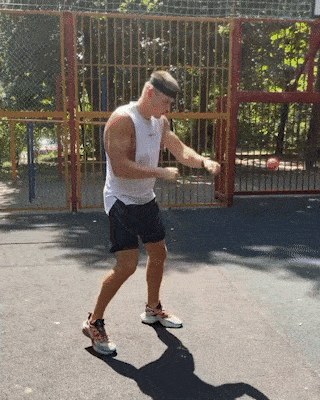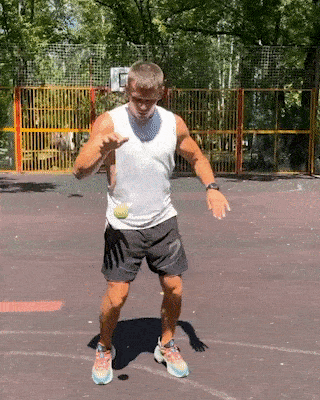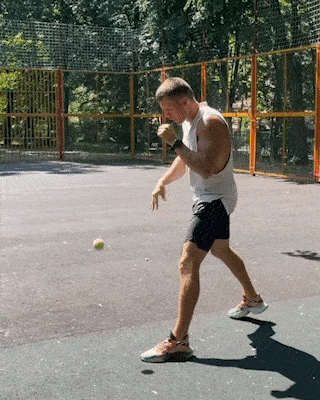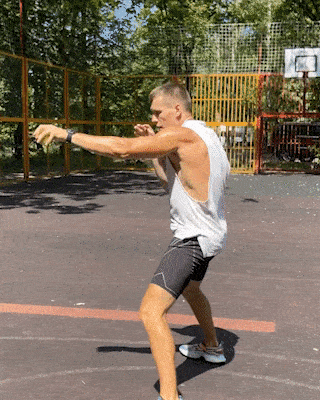How To Improve Reactions
4 MIN READ
Fast reactions in boxing are vital to both avoiding punches and setting up counter shots, with the ability to respond quickly to an incoming threat or potential opening being decisive in the ring.
While many legendary fighters such as Roy Jones Jr. and Muhammad Ali were able to rely on their instinctual reflexes to achieve ring success, reactions can be honed and developed in the gym as well.
Small movements can make the biggest differences to the outcome of a fight, so drilling to enhance reactions each day will go a long way in improving overall skills.
BOXRAW outline five training drills that can be carried out to help boost a fighter’s reactions for stepping into the ring.
Reflex Ball

On top of reacting to potential defensive openings to land your own punches in a fight, you must be able to develop quick reflexes in order to avoid incoming shots too. Once your defence is bolstered by possessing quick-fire reactions to punches coming at you, you’ll be able to use this to your attacking advantage.
The drill: Attach the strap part of the reflex ball around your head and adjust the length of the wire accordingly. Begin to punch the attached ball slowly using basic punches like the jab and back hand, finding your rhythm and getting used to the movements. Once comfortable, you can start to let the ball come towards your face and slip it before carrying on punching from a different position.
Tennis Ball Drops

Once you develop both your reflexes and hand speed to a strong level, counter punching will become natural and seeing openings in an opponent’s defence will come as second nature. But it’s being able to quickly act on those gaps in someone’s guard that will bring success.
The drill: Have a training partner hold a tennis ball in each hand directly in front of you, while you place your own hands on top of theirs. Your partner will drop one of the balls at any given time and you must react fast to catch the dropping ball before it hits the ground and return it to their grasp before the next one falls.
Ball Bounce Spins

Being able to quickly react to what’s in front of you will help to improve both overall defence and attacking abilities in the ring. Developing your hands to move instinctively will be a beneficial boost when it comes to a fight scenario - throwing counters rapidly without hesitation once an opening appears.
The drill: Standing in your boxing stance and staying light on your feet, bounce a tennis ball directly in front of you with enough force that it reaches at least head height. As soon as you bounce the ball, spin to your left or right to return to your original position and once again bounce the ball. Aim for a smooth motion of bouncing directly after spinning, keeping your eyes on the ball when facing forward and finding a rhythm. This will develop your hand and eye coordination along with reflexes; while spinning is a good way of replicating what it’s like to have been hit with a big shot in a bout and subsequently having to deal with the situation.
Ball Punch-Outs

Combining your hand and feet movements together with quick reactions will make you an overall better fighter. Being able to move both your upper body and legs in sync based on what openings are in front of you can separate a good fighter from a great fighter.
The drill: Using a tennis ball again, bounce it in front of you with force so it reaches shoulder height. Once you’ve bounced the ball, immediately throw punches before catching it as part of one of your punching motions. Begin by throwing single shots before catching the ball then move on to combinations in order to get into a comfortable rhythm. Catching the ball before it drops too low and swiftly throwing shots will help develop both your reactions and hand speed together.
Shadowboxing Ball Crossovers

Reactions can be developed so you will instinctively move away from a punch or throw a counter shot without any hesitation but it helps to get into a fluid rhythm as well. If you’re comfortable and relaxed while standing in front of another fighter, reflexes are more tuned in. Continuous movements also mean you don’t always have to just react - sometimes already being off the punching line due to your motions is even more beneficial.
The drill: Start off by holding a tennis ball in your left hand. Move this hand out as if you were throwing a punch, releasing the ball momentarily before catching it with your right hand in a fluid movement. Then repeat this for the opposite direction; eventually getting into a constant rhythm with both arms. After every few crossovers with the ball, throw some straight shots without releasing it too.
Drills: @igor_1vanchenko
